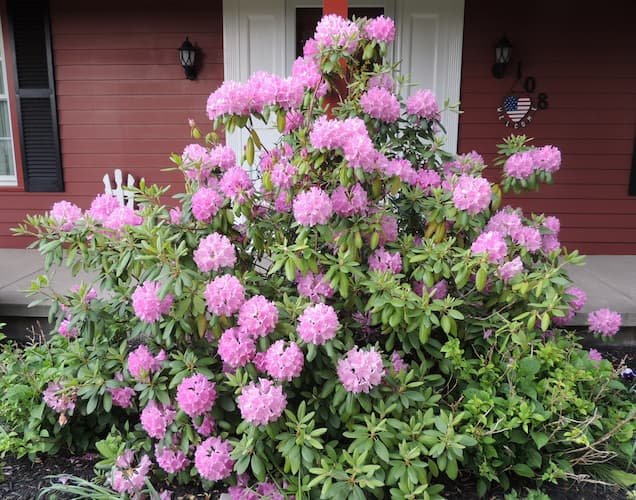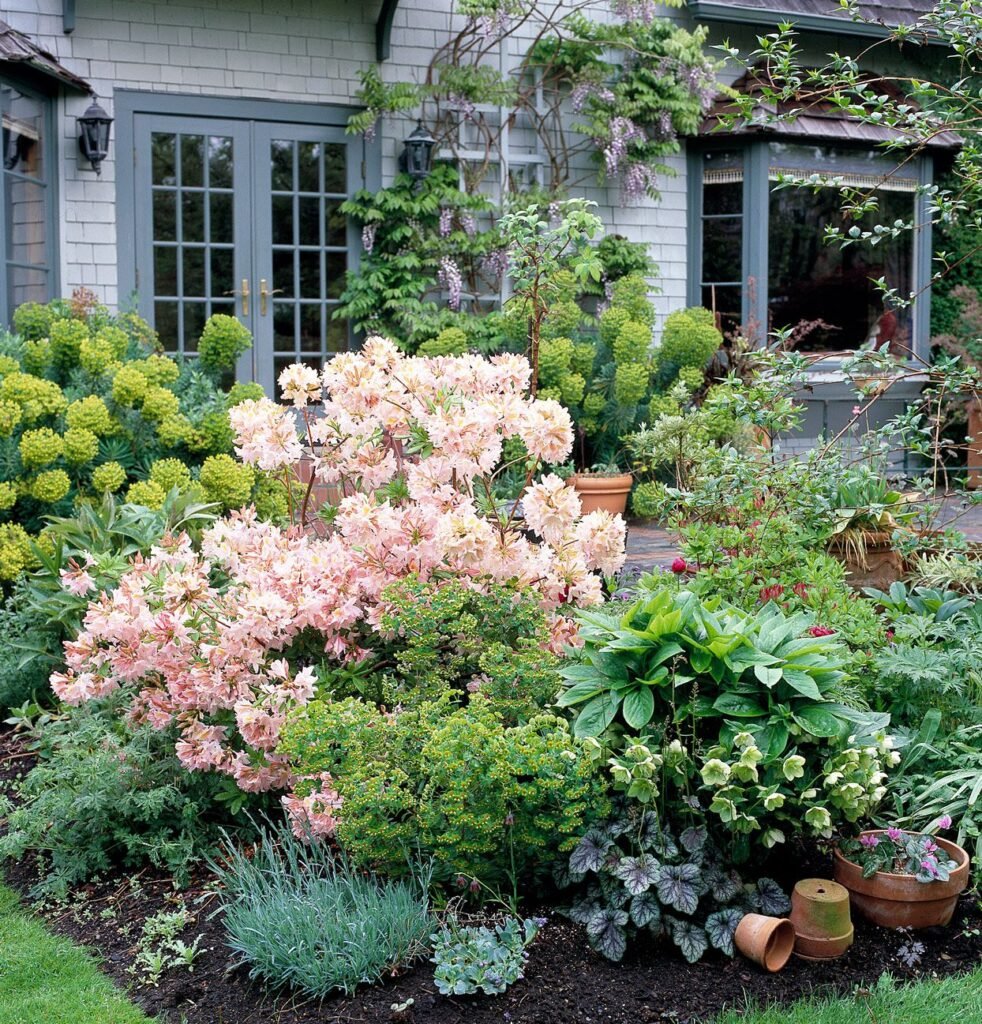Rhododendrons are among the most stunning flowering shrubs you can add to your landscape. Known for their clusters of vibrant blooms and glossy evergreen leaves, they add year-round interest and bursts of seasonal color. While they are considered relatively low-maintenance once established, growing them successfully requires the right planning, planting, and care. Whether you’re a beginner gardener or someone looking to enhance your outdoor space, rhododendrons can become a breathtaking focal point.
This guide will walk you through everything you need to know about growing and caring for rhododendrons in your landscape.
Why Grow Rhododendrons?

Before diving into planting, it’s worth appreciating why rhododendrons are so beloved:
- Stunning Flowers: They produce large trusses of blooms in shades of pink, red, purple, yellow, and white.
- Evergreen Foliage: Many varieties retain their leaves year-round, providing constant greenery.
- Variety: With thousands of cultivars, you can find compact types for small gardens and large shrubs for expansive landscapes.
- Wildlife-Friendly: Their nectar-rich flowers attract pollinators like bees and butterflies.
With the right conditions, rhododendrons can live for decades, becoming legacy plants in your garden.
Choosing the Right Rhododendron

Not all rhododendrons are created equal. Choosing the right variety ensures success in your garden.
- Size: Rhododendrons range from dwarf types (2–3 feet tall) to towering shrubs that reach 20 feet. Small gardens benefit from compact varieties like Rhododendron ‘PJM’, while larger landscapes can handle giants like Rhododendron catawbiense.
- Flower Color and Bloom Time: Early, mid, and late-season bloomers are available. Planting a mix extends your flowering season.
- Climate Suitability: Rhododendrons thrive in USDA zones 4–8, but some tender varieties prefer milder climates. Always check your hardiness zone before purchasing.
- Leaf Type: Broadleaf evergreens are the most common, but deciduous azaleas (a type of rhododendron) can also add seasonal variety.
Ideal Growing Conditions
Rhododendrons are particular about their growing environment. To thrive, they need:
- Light: Dappled or partial shade is ideal. Too much sun can scorch the leaves, while deep shade reduces flowering. Morning sun with afternoon shade is perfect.
- Soil: They require acidic soil (pH 4.5–6.0) that is well-draining and rich in organic matter.
- Moisture: Rhododendrons need consistent moisture but dislike soggy roots. Raised beds or slopes work well for drainage.
- Shelter: Plant them in a spot protected from harsh winds, which can dry out leaves in winter.
How to Plant Rhododendrons

Proper planting is essential for healthy growth. Follow these steps:
- Prepare the Soil
Test your soil’s pH before planting. If it’s too alkaline, amend it with peat moss, pine needles, or sulfur to increase acidity. - Dig the Right Hole
Dig a hole twice as wide as the root ball but no deeper than the plant’s current soil level. Rhododendrons have shallow roots, so planting too deep can suffocate them. - Set the Plant
Place the shrub in the hole so the top of the root ball is slightly above ground level. This prevents water from pooling around the crown. - Backfill and Mulch
Fill the hole with a mix of native soil and organic matter. Apply a 2–3 inch layer of mulch, such as pine bark or needles, to conserve moisture and keep roots cool. - Water Well
Water thoroughly after planting to help settle the soil around the roots.
Watering and Fertilizing Rhododendrons

Watering
- Rhododendrons prefer evenly moist soil. Water deeply once or twice a week, especially during dry spells.
- Avoid overhead watering, which can cause fungal issues on leaves.
Fertilizing
- Use a fertilizer formulated for acid-loving plants (like azaleas and camellias).
- Apply in early spring, just before new growth begins.
- Avoid high-nitrogen fertilizers that promote excessive leaf growth at the expense of flowers.
Pruning and Maintenance
Pruning keeps rhododendrons healthy and encourages better blooms.
- Deadheading: Remove spent flower clusters by snapping them off carefully. This prevents the plant from wasting energy on seed production.
- Shaping: Lightly prune after flowering to maintain shape and size.
- Rejuvenation Pruning: Older, leggy shrubs can be cut back by one-third in late winter or early spring to encourage new growth.
Seasonal Care for Rhododendrons

Rhododendrons require different types of care throughout the year.
Spring
- Fertilize before blooming.
- Water regularly as flower buds develop.
- Deadhead faded blooms.
Summer
- Maintain mulch to retain soil moisture.
- Monitor for pests like lace bugs and aphids.
Fall
- Stop fertilizing to allow the plant to prepare for winter dormancy.
- Water deeply before the ground freezes.
Winter
- Protect young plants with burlap screens against harsh winds.
- Keep roots insulated with mulch, but avoid piling it against the stem.
Common Problems and Solutions
- Yellowing Leaves: Often caused by alkaline soil. Remedy with soil acidifiers.
- Poor Flowering: Can result from too much shade, over-fertilization, or pruning at the wrong time.
- Root Rot: Occurs in poorly drained soil. Plant in raised beds or amend soil for better drainage.
- Pests: Watch for lace bugs, spider mites, and weevils. Neem oil or insecticidal soap can help.
- Leaf Burn: Common in winter when leaves lose moisture. Provide wind protection and adequate mulching.
Landscaping with Rhododendrons
Rhododendrons aren’t just plants; they’re landscape stars. Here are some creative ways to use them:
- Foundation Plantings: Their evergreen foliage makes them perfect near the house for year-round beauty.
- Woodland Gardens: Pair them with ferns, hostas, and shade-loving perennials for a natural look.
- Borders and Hedges: Compact varieties can form colorful, seasonal borders.
- Specimen Plants: Large rhododendrons stand out beautifully as focal points in the garden.
Tips for Success
- Always check soil pH before planting.
- Mulch annually to keep roots cool and moist.
- Plant different varieties for extended bloom time.
- Be patient—rhododendrons can take several years to reach full flowering potential.
Conclusion
Rhododendrons are truly rewarding shrubs that can transform your landscape with their vibrant blooms and evergreen presence. While they may seem finicky at first, once you understand their needs—acidic soil, consistent moisture, and partial shade—they’re surprisingly easy to grow. With thoughtful planting, seasonal care, and a bit of patience, rhododendrons will reward you year after year with breathtaking spring displays and lush greenery.
By following this guide, you can confidently plant and nurture rhododendrons in your garden, ensuring they thrive for decades to come.
